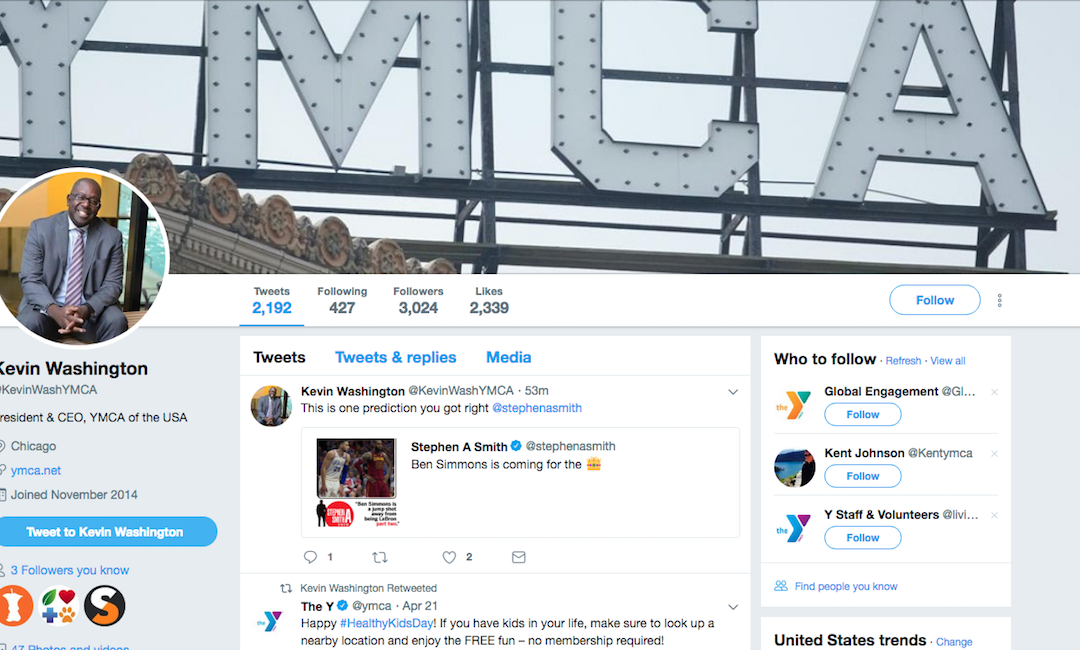Nonprofit organizations of all sizes work tirelessly to build their audience and communicate effectively. Some charities have found success when members of your executive team maintain a public presence on Twitter. There are a few factors to take into consideration if an executive at your charity is considering using Twitter regularly.
There are several ways to utilize Twitter to promote your organization and brand. We’ve stated in previous blog posts that Twitter – like all forms of social media – is most effective when used as an engagement and communication tool, compared to just a broadcasting mechanism.
To better understand the difference we’ve highlighted the Twitter feeds from the CEO’s of two of the largest organizations in the United States. Jonathan Reckford (@JReckford) is CEO of Habitat for Humanity. His tweets are focused on organizational news and often highlight other Habitat for Humanity Twitter accounts. It is focused on broadcasting updates. Kevin Washington (@KevinWashYMCA) is the CEO of YMCA of the USA. He regularly tweets with similar organizational updates, but he also replies to people, shares his personal views on current events, and links to articles that interest him.
These different communication styles are widely used but have different goals. One style is being used to disseminate updates; the other is being used to engage and interact with an audience.
If your goal is highlight updates and news items, then you can use Twitter to broadcast those to an audience. The ability to build an audience will often be limited; Twitter users like to interact and communicate with the people that they follow.
If your goal is to build an engaged audience, then it’s vital that you consider some important questions. Is the executive at your nonprofit able to commit time to communicating in this space? Are they willing to be the public face of the organization? Are they comfortable with writing people back without input from other staff? If your executive takes a lot of time to craft any communication and prefers to have multiple people review it, Twitter might not be the right fit for them. Volunteers, journalists, and strangers are going to send public or direct messages to your executive, and they need to be comfortable in handling these.
Twitter is another tool in your organization’s proverbial toolbox. But, it is important to utilize this tool effectively. An engaged and interactive executive helps to elevate your organization and brand. A stale and inconsistent Twitter feeds absorbs time and doesn’t provide much institutional value.
If you’re looking for examples of nonprofit executives that have a strong Twitter presence, we suggest you follow these folks:
- Jo Ann Jenkins – AARP – @JoAnn_Jenkins
- Leila Janah – Samasource – @leila_c
- Ana Marie Argilagos – Hispanics in Philanthropy – @AM_Argilagos
- Vu Le – Rainier Valley Corps – @nonprofitaf
- Luvvie Ajayi – The Red Pump Project – @Luvvie
- Fatima Goss Graves – National Women’s Law Center – @FGossGraves
- Jean Case – Case Foundation – @jeancase
- Shannon Minter – National Center for Lesbian Rights – @shannonminter5
- Kate Barr – Propel Nonprofits – @KateSBarr
- Robert Egger – L.A. Kitchen and World Central Kitchen – @robertegger
- Cynthia Nimmo – Women’s Funding Network – @Cynthia_Nimmo
- Bill Shore – Share Our Strength – @billshore
- Melinda Gates – Bill & Melinda Gates Foundation – @melindagates
- Michael Chae – Playworks – @mchae
- Hector Sanchez Barba – Labor Council for Latin American Advancement (LCLAA) – @Hesanche

Justin (he, him) is a Principal and Co-Founder of Social Change Consulting. He has over fifteen years of nonprofit experience, with expertise in online fundraising, digital communications, and data management. Justin helps organizations connect their communication strategy to their income development needs. When he’s not on the clock, Justin is exploring Berlin, running, listening to too many podcasts, and drinking too much coffee.
